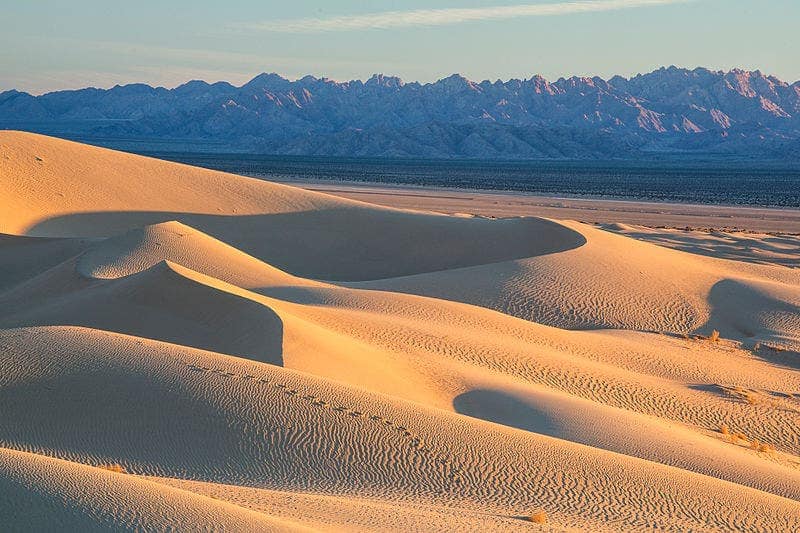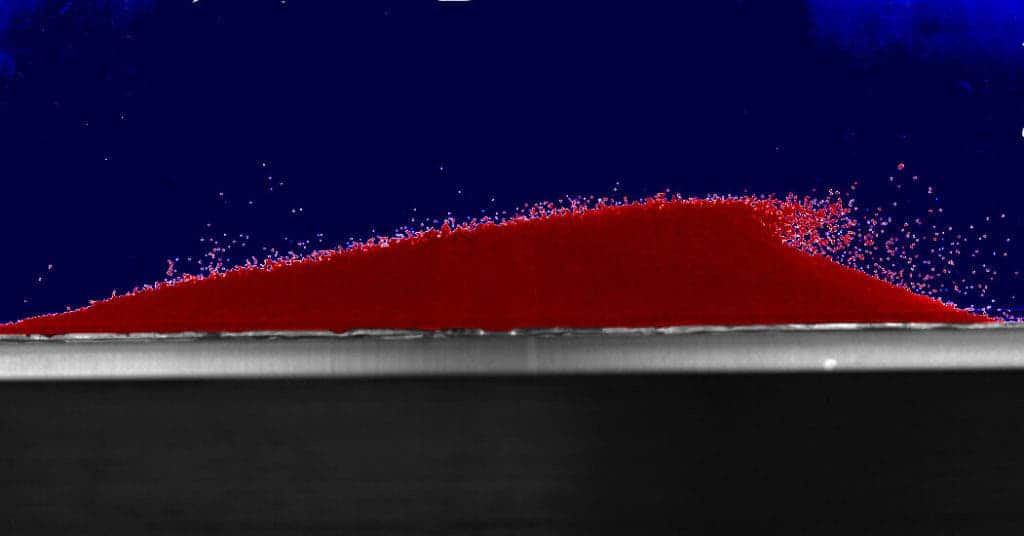
Try to picture a sand dune — it’s not alone, is it? It’s hard to imagine a singular sand dune not surrounded by others of its kind. Saying that dunes are “social creatures” would be taking the metaphor too far, but according to new research, they can “communicate” with each other.
Not fond of neighbors
Although they might not look like it, sand dunes are very active. They shrink and grow, migrating from place to place. They also seem to develop in particular ways — whether in deserts, sea beds, or rivers, dunes usually appear in large groups, either in fields or corridors.
Wanting to better understand these processes, researchers set up an experimental ‘racetrack’, where they monitored how two identical dunes developed near a controlled stream. They found that although the two dunes started out exactly the same, they didn’t seem to like eachother that much: as time passed, they moved farther and farther away, pushed by turbulent swirls coming from the upstream dune.
It’s as if the dunes communicate and don’t get along very well.
“There are different theories on dune interaction: one is that dunes of different sizes will collide, and keep colliding, until they form one giant dune, although this phenomenon has not yet been observed in nature,” said Karol Bacik, a Ph.D. candidate in Cambridge’s Department of Applied Mathematics and Theoretical Physics, and the paper’s first author.
“Another theory is that dunes might collide and exchange mass, sort of like billiard balls bouncing off one another, until they are the same size and move at the same speed, but we need to validate these theories experimentally.”

This is not just a theoretical study. Dune migration is an important process for desertification, which is an increasing threat as global warming continues to take its toll. In the shorter run, moving dunes can threaten shipping channels and infrastructure such as roads and highways.
This is why several research groups are studying dunes, modeling their behavior numerically and understanding the complex processes associated with dune formation and migration.
But numerical data can only get you so far — that’s why Dr. Nathalie Vriend and her lab at Cambridge University designed a unique experimental facility that actually allows them to observe the long-term behavior of dunes.
Communication breakdown
In the latest setup, they mimicked a flume: a man-made water channel with walls raised above the surrounding terrain (as opposed to a ditch, for instance). The circular flume was meant to allow researchers to observe the interaction between dunes.
“Originally, I put multiple dunes in the tank just to speed up data collection, but we didn’t expect to see how they started to interact with each other,” Bacik said.
When the two identical dunes started out, researchers were expecting them to move in a similar way. The migration speed of dunes is related to their height, so it makes sense to expect them to behave similarly. But they didn’t.
At first, the front dune moved faster, although it did somewhat slow down. As the experiment progressed, the dunes moved apart, until they formed an equilibrium on opposite sides of the circular flume. Their speeds then became quite similar, and they remained on opposite sides of the circle.
“The front dune generates the turbulence pattern which we see on the back dune,” said Vriend. “The flow structure behind the front dune is like a wake behind a boat, and affects the properties of the next dune.”
The next step is to start putting numbers on these processes. Quantitative evidence for such complex mechanisms is never easy to obtain, but researchers want to incorporate field and satellite observations to this purpose. They also want to study how dunes develop in other types of environments, such as dry deserts — where satellite observations will be particularly useful.
The study was accepted for publication in Physical Research Letters.









